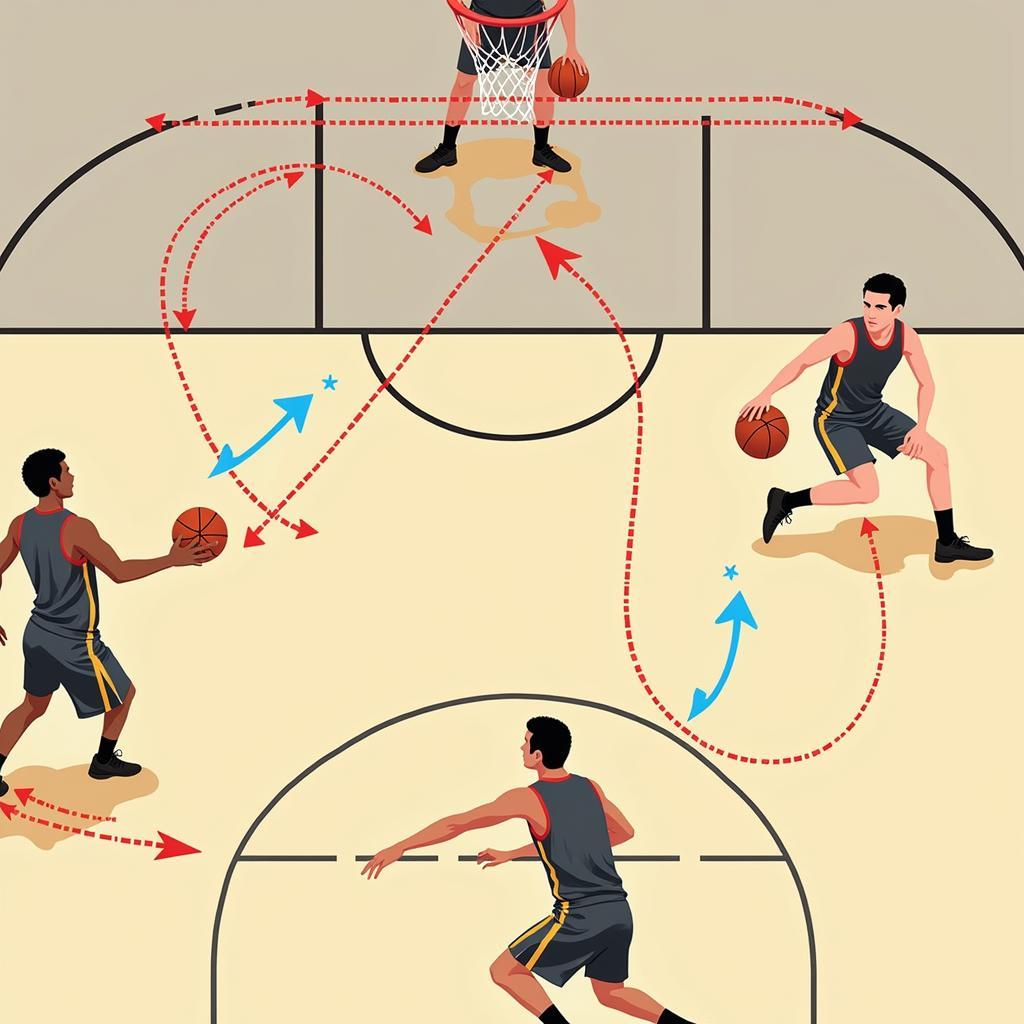Mastering the Spread Offense Playbook: A Deep Dive into Basketball Strategy
October 25, 2024The spread offense playbook has taken the basketball world by storm, transforming the game from a structured, half-court battle into a fast-paced, free-flowing exhibition of skill and athleticism. This dynamic offensive strategy emphasizes spacing, ball movement, and player versatility, creating a nightmare for defenses struggling to keep up. Let’s explore the intricacies of the spread offense, dissecting its core principles, advantages, and how it continues to reshape modern basketball.
Spacing: The Cornerstone of the Spread Offense
At its heart, the spread offense is all about maximizing space on the court. By strategically positioning players around the perimeter, often beyond the three-point line, the offense forces defenses to cover more ground and creates wider driving lanes for slashers and cutters. This spacing disrupts traditional defensive schemes, minimizing double-teams and forcing defenders to make split-second decisions in isolation situations.
Ball Movement: The Engine that Drives Success
Stagnant offenses are easy prey for defenses. The spread offense combats this by emphasizing constant ball movement. Quick passes, dribble penetration, and off-ball screens create a whirlwind of activity that keeps defenders guessing and scrambling. This dynamic ball movement forces defenses to react rather than dictate, leading to breakdowns, mismatches, and open shots for the offense.
Player Versatility: A Key Ingredient for Success
The spread offense thrives on having versatile players who can score from multiple positions and contribute in various facets of the game. Gone are the days of rigidly defined roles; guards need to be able to post up smaller defenders, while big men must possess the skillset to stretch the floor with outside shooting. This adaptability keeps defenses off-balance and creates matchup nightmares that are difficult to solve.
Advantages of the Spread Offense
The spread offense offers a plethora of advantages for teams willing to embrace its principles:
- Increased Scoring Opportunities: Spacing and ball movement naturally lead to higher-percentage shots, often from beyond the arc or at the rim.
- Enhanced Player Development: The spread offense empowers players to make decisions, develop their skills, and showcase their versatility.
- Difficult to Scout and Defend: The fluidity and unpredictability of the spread offense make it challenging for opponents to game plan effectively.
- Exciting and Fan-Friendly: The fast-paced nature and emphasis on individual skill make the spread offense a thrilling spectacle for fans.
The Evolution of the Spread Offense
While the core principles of spacing and ball movement remain constant, the spread offense continues to evolve. Coaches are constantly innovating, adding new wrinkles and adapting the system to their personnel. The incorporation of advanced analytics and the increasing emphasis on three-point shooting have further cemented the spread offense’s place as the dominant offensive philosophy in modern basketball.
Conclusion
The spread offense playbook is more than just a set of plays; it’s a philosophy that empowers players, prioritizes spacing and ball movement, and creates a dynamic and unpredictable brand of basketball. As the game continues to evolve, the spread offense’s impact will only grow, shaping the future of basketball for years to come.
 Basketball players passing the ball in a spread offense
Basketball players passing the ball in a spread offense
FAQs
1. What are the key differences between the spread offense and traditional offenses?
Traditional offenses often rely on set plays, post-ups, and limited spacing. The spread offense, on the other hand, prioritizes spacing, ball movement, and player versatility, creating a more fluid and dynamic offensive system.
2. What kind of players excel in a spread offense?
Players who thrive in a spread offense possess a versatile skillset. They can shoot from outside, attack the basket off the dribble, make quick decisions, and are comfortable playing both on and off the ball.
3. How can I learn more about implementing a spread offense?
Numerous resources are available online and in print that delve into the intricacies of the spread offense. Studying game film of teams that run this system effectively can also provide valuable insights.